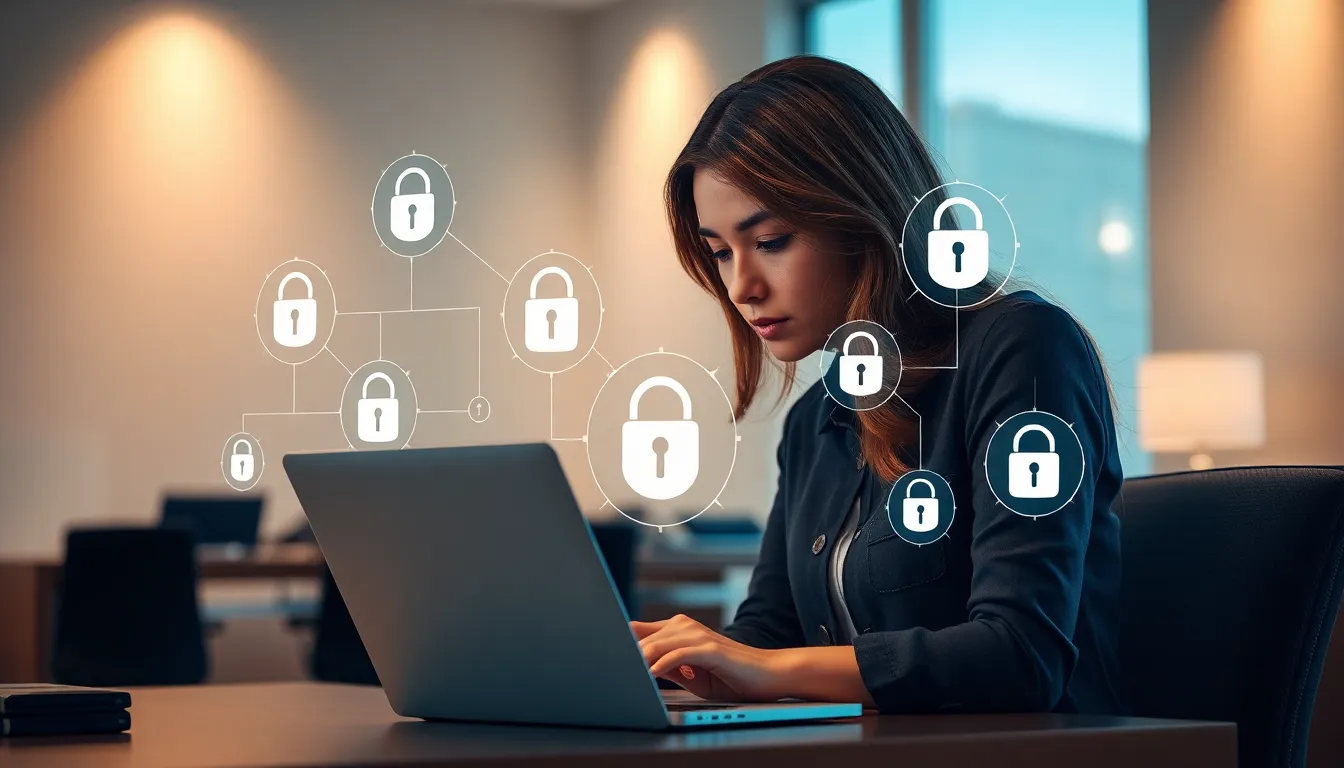
Cybersecurity Hygiene: Essential Tips to Protect Your Data from Breaches
In today’s digital jungle, where cyber threats lurk behind every click, maintaining good cybersecurity hygiene is like brushing your teeth before bed. Sure, it might seem tedious, but skipping it can lead to some seriously nasty consequences. Just like a toothache can ruin a perfectly good day, a data breach can wreak havoc on personal and professional lives alike.
Cybersecurity Hygiene
Cybersecurity hygiene refers to the set of practices and steps that ensure the security and integrity of digital information. This practice includes routine actions that protect individuals and organizations from cyber threats.
What Is Cybersecurity Hygiene?
Cybersecurity hygiene consists of important actions that help keep digital environments secure. Regularly updating software, using strong and unique passwords, and enabling two-factor authentication are essential practices. Employees should receive ongoing training on recognizing phishing attempts and other common cyber threats. Monitoring devices and networks for suspicious activity adds an additional layer of protection.
Importance of Cybersecurity Hygiene
Maintaining cybersecurity hygiene plays a crucial role in preventing data breaches. Businesses face significant financial losses when data breaches occur, with costs averaging $4.35 million per incident, according to IBM’s 2022 report. Additionally, personal reputations can suffer from compromised information. Establishing consistent practices reduces vulnerabilities and safeguards sensitive data. Prioritizing these everyday actions can significantly lower the risk of cyber threats impacting both individuals and organizations.
Key Components of Cybersecurity Hygiene

Cybersecurity hygiene encompasses several essential practices that safeguard digital information. Adopting these actions significantly reduces vulnerabilities to cyber threats.
Regular Software Updates
Regularly updating software plays a critical role in cybersecurity hygiene. Frequent updates address security flaws and patch vulnerabilities that hackers exploit. It’s important to enable automatic updates whenever possible. Many organizations schedule updates during off-peak hours to minimize disruptions. Staying current with updates helps protect systems from malware and other invasive attacks. Underestimating the significance of these updates can expose sensitive data to unnecessary risks.
Strong Password Practices
Strong password practices are fundamental to maintaining effective cybersecurity. Each account should utilize unique, complex passwords that combine letters, numbers, and symbols. Implementing a password manager simplifies the process of generating and storing these passwords. Regularly changing passwords adds an additional layer of security. Users must avoid reusing passwords across multiple accounts, as this increases vulnerability. Strong passwords significantly decrease the likelihood of unauthorized access.
Data Backup Strategies
Data backup strategies provide a safety net against data loss. Frequent backups—ideally on a separate, secure cloud service—ensure data remains accessible during emergencies. Establishing automated backup schedules reduces the possibility of human error. Reviewing backup integrity and restoration processes is crucial for ensuring data can be recovered when needed. Implementing these strategies minimizes risks associated with cyber attacks and hardware failures. Regular backups protect valuable assets and contribute to overall cybersecurity resilience.
Best Practices for Maintaining Cybersecurity Hygiene
Maintaining cybersecurity hygiene involves a set of proactive measures that safeguard digital environments. Effective strategies enhance protection against potential threats in an increasingly hostile cyber landscape.
Employee Training and Awareness
Regular training sessions empower employees to recognize cyber threats. Awareness of phishing attempts can significantly reduce the risk of a data breach. Training programs should be engaging, incorporating real-life scenarios and updates on emerging threats. Frequent refresher courses keep security knowledge current. Organizations benefit when employees understand their role in maintaining security, leading to a vigilant workplace culture.
Implementing Multi-Factor Authentication
Multi-factor authentication (MFA) offers an additional layer of protection for sensitive accounts. It requires users to provide two or more verification methods, dramatically reducing unauthorized access risk. Enabling MFA on critical systems prevents attackers from exploiting compromised passwords. Implementing this practice across all platforms helps safeguard valuable information. Regular reviews of authentication methods ensure they remain relevant against evolving threats.
Network Security Measures
Strong network security measures form the backbone of effective cybersecurity hygiene. Firewalls act as essential barriers against unauthorized access, while intrusion detection systems monitor for suspicious activity. Segmentation of networks limits access to sensitive data based on user roles. Regular audits of network security configurations help identify and rectify vulnerabilities. Investments in up-to-date security technologies fortify defenses against data breaches and other cyber threats.
Common Mistakes to Avoid
Several common mistakes can undermine cybersecurity hygiene. Recognizing and addressing these errors helps individuals and organizations strengthen their defenses against cyber threats.
Neglecting Security Updates
Neglecting security updates leads to significant vulnerabilities in software. Hackers often target outdated programs, exploiting known flaws to gain unauthorized access. Regular updates patch these weaknesses, enhancing overall security posture. Ignoring update notifications increases the likelihood of a data breach, which costs an average of $4.35 million, as reported by IBM in 2022. Prioritizing timely software updates reduces risks and ensures users benefit from the latest security features.
Weak Access Controls
Weak access controls compromise sensitive information. Organizations that do not enforce strict password policies risk unauthorized access to critical systems. Utilizing complex, unique passwords is vital for safeguarding accounts against potential breaches. Implementing multi-factor authentication adds an additional layer of security. Employees should only have access to information necessary for their roles, minimizing chances of data exposure. Regularly revisiting and strengthening access controls enhances the overall cybersecurity framework, ensuring that assets remain protected against evolving threats.
Conclusion
Maintaining robust cybersecurity hygiene is essential for individuals and organizations alike. By adopting proactive measures and consistently applying best practices, they can significantly reduce the risk of data breaches and cyber threats. Regular software updates strong password management and employee training play critical roles in creating a secure digital environment.
Investing in cybersecurity not only protects sensitive information but also preserves reputations and financial stability. As cyber threats continue to evolve staying vigilant and committed to cybersecurity hygiene is more important than ever. Prioritizing these practices ensures a safer online experience and helps mitigate the potential fallout from cyber incidents.
